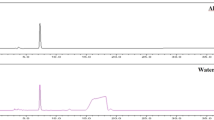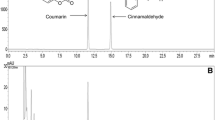The genotoxic activity of lucidin (1,3-dihydroxy-2-hydroxymethyl-9,10-anthraquinone), a natural component of Rubia tinctorum L., was tested in a battery of short-term tests. The compound was mutagenic in five Salmonella typhimurium strains without metabolic activation, but the mutagenicity was increased after addition of rat liver S9 mix. In V79 cells, lucidin was mutagenic at the hypoxanthine-guanine phosphoribosyl transferase gene locus and active at inducing DNA single-strand breaks and DNA protein cross-links as assayed by the alkaline elution method. Lucidin also induced DNA repair synthesis in primary rat hepatocytes and transformed C3HI M2-mouse fibroblasts in culture. We also investigated lucidinethylether, which is formed from lucidin by extraction of madder roots with boiling ethanol. This compound was also mutagenic in Salmonella, but only after addition of rat liver S9 mix. Lucidinethylether was weakly mutagenic to V79 cells which were cocultivated with rat hepatocytes. The compound did not induce DNA repair synthesis in hepatocytes from untreated rats, but positive results were obtained when hepatocytes from rats pretreated with phenobarbital were used. We conclude that lucidin and its derivatives are genotoxic.
Similar content being viewed by others
Abbreviations
- DMBA:
-
7,12-dimethylbenz(a)anthracene
- HA:
-
hydroxyanthraquinones
- LUE:
-
lucidinethylether
- PRH:
-
primary rat hepatocytes
- UDS:
-
unscheduled DNA synthesis
References
AMES, B.N., McCANN, J. and YAMASAKI, E. (1975). Methods for detecting carcinogens and mutagens with the Salmonella mammalian microsome mutagenicity test. Mutat. Res. 31:347–364.
BACHUR, N.R., GORDON, S.L. and GEE, M.V. (1978). A general mechanism for microsomal activation of quinone anticancer agents to free radicals. Cancer Res. 38:1745–1750.
BROWN, J.P. and BROWN, R.J. (1976). Mutagenesis by 9,10-Anthraquinone derivatives and related compounds in Salmonella typhimurium. Mutation Res. 40:203–224.
BROWN, J. and DIETRICH, P. (1979). Mutagenicity of anthraquinone and benzanthrone derivatives in the Salmonella/microsome test: Activation of anthraquinone glycosides by enzymic extracts of rat cecal bacteria. Mutation Res. 66:9–24.
BURNETT, A.R. and THOMSON, R.H. (1968). Naturally occurring quinones. Part XV. Biogenesis of the Anthraquinones in Rubia tinctorum L. (Madder). J. Chem. Soc. (C):2437–2441.
CALENDI, E., DiMARCO, A., REGGIANI, J., SCARPINATO, B. and VALENTINI, L. (1965). On physico-chemical interactions between daunomycin and nucleic acids. Biochim. Biophys. Acta 103:25–49.
EWIG, R. and KOHN, K. (1977). DNA damage and repair in mouse leukemia L1210 cells treated with nitrogen mustard, 1,3-Bis(2-chlorethyl)-1-nitrosourea and nitrosoureas. Cancer Res. 37:2114–2122.
GEBHARDT, M. (1979). Erste vorläufige Ergebnisse einer Studie über die litholytische Wirksamkeit von Urol auf die Calcium-oxalatsteine. Fortschr. Urol. Nephr., Suppl. 14:34–40.
GRAEBE, C. and LIEBERMANN, C. (1870). Annalen, Suppl. 7:257.
KOHN, K.W., ERICHSON, L.C., EWIG, R.A. and FRIEDMANN, C.A. (1976). Fractionation of DNA from mammalian cells by alkaline elution. Biochemistry 15:4629–4637.
LANGENBACH, R., HEATHER, J. and HUBERMANN, E. (1978). Cocultivation of V79 cells with primary rat hepatocytes. Proc. Nat. Acad. Sci. USA 75:2864–2868.
LEISTHER, E. (1975). Isolierung, Identifizierung und Biosynthese von Anthrachinonen in Zellsuspensionskulturen von Morinda citrifolia. Planta Medica, Suppl. 28:214–223.
MARQUARDT, H., PHILIPS, F.S. and STERNBERG, S.S. (1976). Tumorigenicityinvivo and induction of malignant transformation and mutagenicity in cell cultures by adriamycin and daunomycin. Cancer Res. 36:2065–2069.
MORI, H., KAWAI, K., OHBAYASHI, F., KUNIYASU, T., YAMAZAKI, M., TAKASHI, H. and WILLIAMS, G. (1984). The genotoxicity of a variety of mycotoxins in the hepatocyte primary culture/DNA repair test using rat and mouse hepatocytes. Cancer Res. 44:2918–2923.
MORI, H., SUGIE, S., NIWA, K., TAKAHASHI, M. and KAWAI, K. (1985). Induction of intestinal tumors in rats by chrysazin. Br. J. Cancer 52:781–783.
MORI, H., SUGIE, S., NIWA, K., YOSHIMI, N., TANAKA, T. and HIRONO, I. (1986). Carcinogenicity of chrysazin in large intestine and liver of mice. Jpn. J. Cancer Res. (Gann) 77:871–876.
MURTI, V., SESHRADI, T. and SIVAKUMARAN, S. (1970). A Study of Madder, the Roots of Rubia tinctorum Linn. Indian J. Chem. 8:779–782.
ROSS, W., GLAUBIGER, D. and KOHN, K. (1979). Qualitative and quantitative aspects of intercalator-induced DNA strand breaks. Biochim. Biophys. Acta 562:41–50.
ROTH, H., SCHMID, W., von LIFT, P.H. and HORHAMMER, L. (1980). In: Hagers Handbuch, 4. Ausgabe, pp. 179–183. Springer Verlag, Berlin.
SAN, R. and WILLIAMS, G. (1977). Rat hepatocyte primary cell culture-mediated mutagenesis of adult rat liver epithelial cells by procarcinogens. Proc. Soc. Exp. Biol. and Med. 156:534–538.
WESTERDORF. J. and VAHLENSIEK, W. (1981). Spasmolytische und kontraktile Einflusse des pflanzlichen Kombinationspraparates UROL auf die glatte Muskulatur des isolierten Meeschweinchendarms. Arzneim.-Forsch./Drug Res. 31.40–43.
WESTENDORF, J., and VAHLENSIEK, W. (1983). Spasmolytische Einflusse des pflanzlichen Kombinationspraparates UROL auf die isolierte Rattenharnblase. Therapiewoche 33:936–944.
WOSTENDORF, J., MARQUARDT, H. and MARQUADRT, H. (1984). Structure-activity-relationship of anthracycline-induced genotoxicity in vitro. Cancer Res. 44: 5599–5604.
WESTENDORF, J., GROTH, G., STEINHEIDER, G. and MARQUADRT, H. (1985). Formation of DNA-adducts and induction of DNA-crosslinks and chromosomal aberrations by the new potent anthracyclin antitumor antibiotics morpholinodaunomycin, cyanomorpholinodaunomycin and cyanomorpholinoadriamycin. Cell Biol. Toxicol. 1(2): 87–101.
WILLIAMS, G.M. (1977). Detection of chemical carcinogens by unscheduled DNA synthesis in rat liver primary cell cultures. Cancer Res. 37:1845–1851.
WILLIAMS, G., LASPIA, M. and DUNKEL, V. (1982) Reliability of the hepatocyte primary culture/DNA repair test in testing of coded carcinogens and non-carcinogens. Mutation Res. 97:359–370.
YAHAGI, T., NAGAO, M., SEINO, Y., MATSUSHIMA, T., SUGIMARA, T. and OKADA, M. (1977). Mutagenicity of N-nitrosamines on Salmonella. Mutation Res. 48:121–130.
YASUI, Y. and TAKEDA, N. (1983). Identification of a mutagenic substance, in Rubia tinctorum L. (madder) root, as lucidin. Mutation Res. 121:185–190.
ZWELLING, L., MICHAELS, S., ERICKSON, L., UNGERLEIDER, R., NICHOLS, M. and KOHN, K. (1981). Protein-associated deoxyribonucleic acid strand breaks in L1210 cells treated with the deoxyribonucleic acid intercalating agents 4′-(9-acridinylamino) methanesulfon-m-aniside and adriamycin. Biochem. 20:6553–6563.
Author information
Authors and Affiliations
Rights and permissions
About this article
Cite this article
Westendorf, J., Poginsky, B., Marquard, H. et al. The genotoxicity of lucidin, a natural component of Rubia tinctorum L., and lucidinethylether, a component of ethanolic Rubia extracts. Cell Biol Toxicol 4, 225–239 (1988). https://doi.org/10.1007/BF00119248
Received:
Accepted:
Issue Date:
DOI: https://doi.org/10.1007/BF00119248




